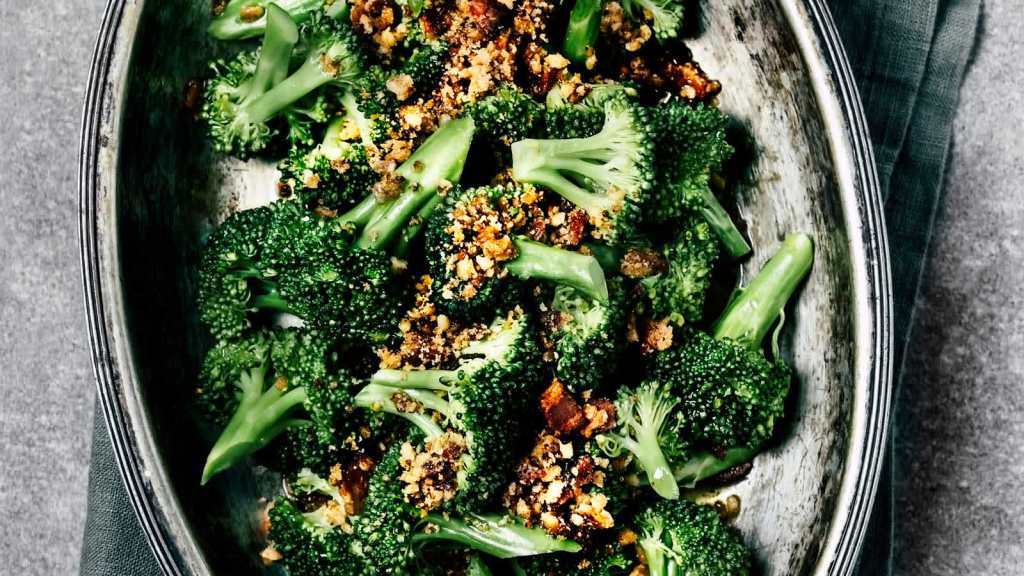As far as environmentally-friendly lifestyle changes go, reducing the amount of meat you eat can have a massive impact. We’re not saying you need to be eating a vegan diet every day, but making small diet changes is a great place to start.
Livestock farming is a contentious issue these days and it’s largely linked to the impact of factory farming on the environment. According to Merriam-Webster, factory farming refers to “a farm on which large numbers of livestock are raised indoors in conditions intended to maximise production at minimal cost.”
As The Guardian reports, factory farming became the norm when breeders realised that by keeping animals indoors and only feeding them grain, they would grow at a quicker rate. While this increased profits, it also meant we had an oversupply of animals.
Below, we’ve detailed how livestock farming is affecting the environment and how you can easily decrease your meat consumption.
The livestock industry is responsible for increased greenhouse gases
The effect of livestock farming on climate change is undeniable. According to the Australian Government Department of Agriculture, Water and the Environment, livestock emissions account for roughly 10% of Australia’s greenhouse gases.
The most concerning greenhouse gases produced from livestock are methane and nitrous oxide. According to National Geographic, methane is a particularly robust greenhouse gas and it’s about 28 times more potent than carbon dioxide. So, every time a cow passes gas or belches, it releases methane into the environment, which is directly impacting global warming.
There are an estimated 1.4 billion cattle around the world and as the demand for beef and dairy grows, so does the number of cattle. So, if we continue to consume large amounts of meat and dairy products, the production will continue to increase. In order to make a difference in this department, we all need to consume a little less meat. If demand lowers, then so will production.
Meat production takes from the land
Raising livestock is also pretty hard on the land itself. According to the Food and Agriculture Organisation of the United Nations (FAO), roughly 26% of the earth’s land surface is used for farming livestock, while 33% of croplands are used for livestock feed production. According to the FAO, as demand for meat products surge, more land will be needed and this is a major sustainability challenge.
The Conversation estimates that to produce one kilo of beef, 25kg of grain and roughly 15,000 litres of water is needed. So, not only are the greenhouse gases adding to climate change, a lot of the earth’s resources are needed to keep farming afloat.
What can you do?
While you might feel helpless as an individual, every little bit counts. The FAO has a few easy ways consumers can help in this area, these are:
- Consume meat and dairy products from animals reared on grasslands, rather than from factory farms
- Eat organically grown livestock products when possible
- And lastly, eat less meat
Easy meat-free recipes
Incorporating more meat-free meals into your daily diet doesn’t mean you have to nosh on a macrobiotic bowl filled with tempeh, bean sprouts and quinoa. You can simply replace the meat component of your favourite dishes with things like lentils, tofu or chickpeas.
Breakfast
Brekkie is probably the easiest meal to make vegeterian or vegan. If your usual brekkie is bacon and eggs, simply omit the bacon and serve grilled tomato and mushrooms alongside your eggs. Otherwise, avocado on toast is an easy (and vegan!) dish, or you could try overnight oats or a smoothie if you’re after something sweeter.
Lunch
Ditch your sad desk lunch for a delicious meat-free meal. If chomping down on a sandwich is your favourite work lunch, swap the usual ham and cheese filling for something like This Savory Vegan’s Grilled Veggie Sandwich. If you’re in the mood for eating lunch away from your desk, most restaurants and takeaway shops will have a vego option like tofu laksa, cucumber sushi or a bean burrito.
Dinner
When it comes to meat-free meals for dinner, the options are endless. If you’re hankering for a particular meal, there’s always a way to make it vego. This Lentil Moussaka Bake by Delicious uses lentils instead of the lamb and it’s still just as good sans meat. Otherwise, you can’t quite beat a veggie curry, especially as we head into cooler weather. Minimalist Baker’s Yellow Chickpea Cauliflower Curry is rich in flavour, while also being vegan.
Incorporating vegetarian or vegan meals into your recipe repertoire takes time. There’s nothing wrong with starting small and the easiest way to do so is by simply being aware of how much meat you’re consuming on a daily basis.







